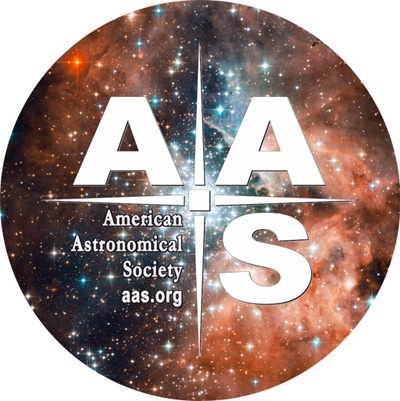7 October 2020
Susanna Kohler

This illustration shows NASA’s Voyager 1 and Voyager 2 probes outside of the heliosphere, the protective bubble created by the Sun around our solar system. Credit: NASA/JPL-Caltech.
In 1977, two space probes were launched from Earth, flung out toward the farthest reaches of our solar system. Now, 43 years later, Voyager 1 and Voyager 2 are journeying through interstellar space — and they’re still providing new insights.


Voyaging to the Outer Edge
The original mission of the Voyager spacecraft was to study the giant planets in our outer solar system. But across 43 years and three mission extensions, these little probes have gone on to do so much more — most recently crossing out of the heliosphere and providing our first up-close look at interstellar space.

What’s the heliosphere? As the solar wind streams from the Sun, it carries magnetic fields outward, inflating a bubble around the solar system that separates us from the surrounding interstellar medium (ISM). As the Sun orbits through the galaxy, the heliosphere is compressed on one side and elongated on the other, forming a blunt “nose” and a streaming “tail”.
Into the Unknown
When Voyagers 1 and 2 were launched, they were sent in slightly different directions — so they’re now exploring two different regions of the interface between the heliosphere and the interstellar medium. In 2012, Voyager 1 crossed the boundary of the heliosphere on one side of the nose, at a distance of ~122 au from the Sun. Voyager 2 followed suit in 2018, crossing the other side of the nose at a distance of ~119 au.
Now, both spacecraft are traveling through the very local ISM beyond the heliosphere. But despite their distance (the one-way light travel time to Voyager 1 is ~21 hours!), the probes are still reporting back data — including from the Plasma Wave Science (PWS) instrument on each craft, which uses the long, V-shaped pair of antennae to measure oscillations in the surrounding plasma. From these oscillations, we can infer the electron density of the ISM that the Voyager spacecraft are traveling through.
Denser and Denser
In a new publication, University of Iowa scientists William Kurth and Donald Gurnett report the latest PWS measurement from Voyager 2, which indicates that the electron density of the ISM is currently increasing as the probe travels away from the Sun. This discovery is neatly consistent with the data from Voyager 1, which has also been reporting an increasing radial density gradient since crossing the boundary of the heliosphere and entering interstellar space.

Electron density vs. radial distance from the Sun, as measured by the Voyager 1 (black) and Voyager 2 (red) spacecraft. The radial density gradient in the ISM can be seen in the data from both probes at distances above ~120 au. Credit: Kurth & Gurnett 2020.
Voyagers 1 and 2 have trajectories that differ by 67° in latitude and 43° in longitude — so with the new Voyager 2 data published by Kurth and Gurnett, we now have confirmation that the radial density gradient first measured by Voyager 1 is a large-scale feature around the heliospheric nose.
Still More to Learn
What’s causing the gradient? Two theories have been put forward:
the interaction of the solar wind with the very local ISM creates a pile-up region outside of the heliosphere, or
draping of magnetic field lines over the outer boundary of the heliosphere depletes the plasma just inside the heliosphere.
We’ll potentially be able to differentiate between these two models once we have density measurements from even farther out in the ISM — so we’ll have to see if the Voyager probes last long enough to provide them!
Citation
“Observations of a Radial Density Gradient in the Very Local Interstellar Medium by Voyager 2,” W. S. Kurth and D. A. Gurnett 2020 ApJL 900 L1.
https://iopscience.iop.org/article/10.3847/2041-8213/abae58
See the full article here .

five-ways-keep-your-child-safe-school-shootings
Please help promote STEM in your local schools.

AAS Mission and Vision Statement
The mission of the American Astronomical Society is to enhance and share humanity’s scientific understanding of the Universe.
The Society, through its publications, disseminates and archives the results of astronomical research. The Society also communicates and explains our understanding of the universe to the public.
The Society facilitates and strengthens the interactions among members through professional meetings and other means. The Society supports member divisions representing specialized research and astronomical interests.
The Society represents the goals of its community of members to the nation and the world. The Society also works with other scientific and educational societies to promote the advancement of science.
The Society, through its members, trains, mentors and supports the next generation of astronomers. The Society supports and promotes increased participation of historically underrepresented groups in astronomy.
The Society assists its members to develop their skills in the fields of education and public outreach at all levels. The Society promotes broad interest in astronomy, which enhances science literacy and leads many to careers in science and engineering.
Adopted June 7, 2009
